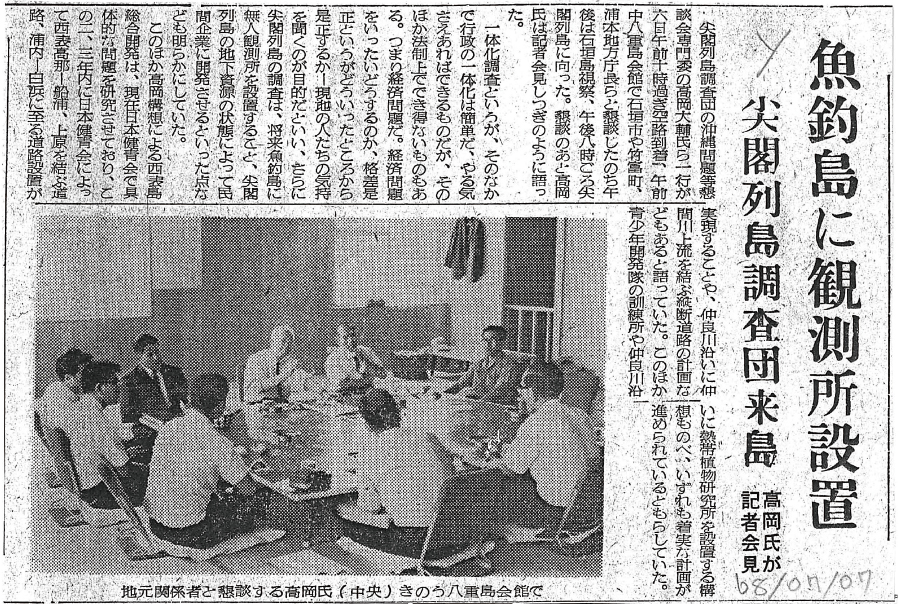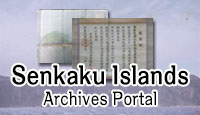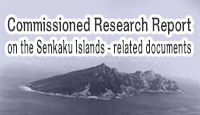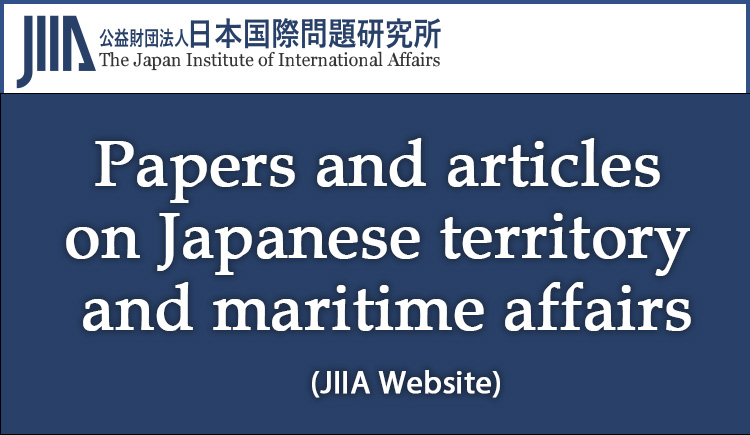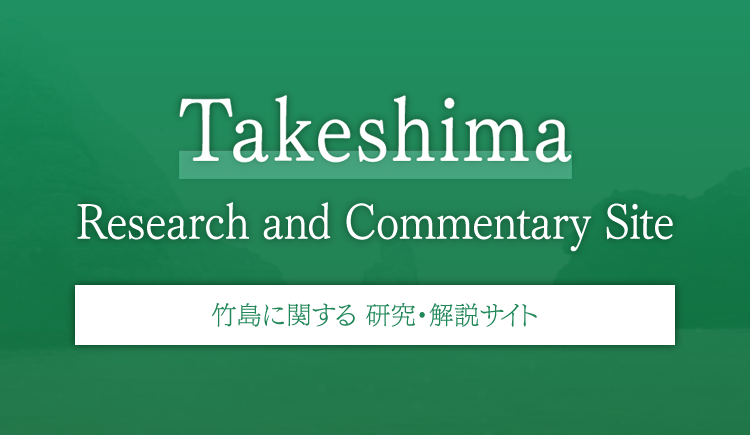The documents and materials published on this website were collected, researched, and prepared with advice from experts, as a part of a Government-commissioned project. The contents of this website do not reflect the views of the Government. Links to external sites (domains other than https://www.cas.go.jp) are not under the management of this site. For linked websites, please check with the organization/group that manages the website for the link in question.
Commentary on themes by historical period
Classification by historical periods V
Developments before and after
the Okinawa Reversion (Around 1972)
(2) Surveys of the Senkaku Islands and the surrounding waters by the Government of Japan
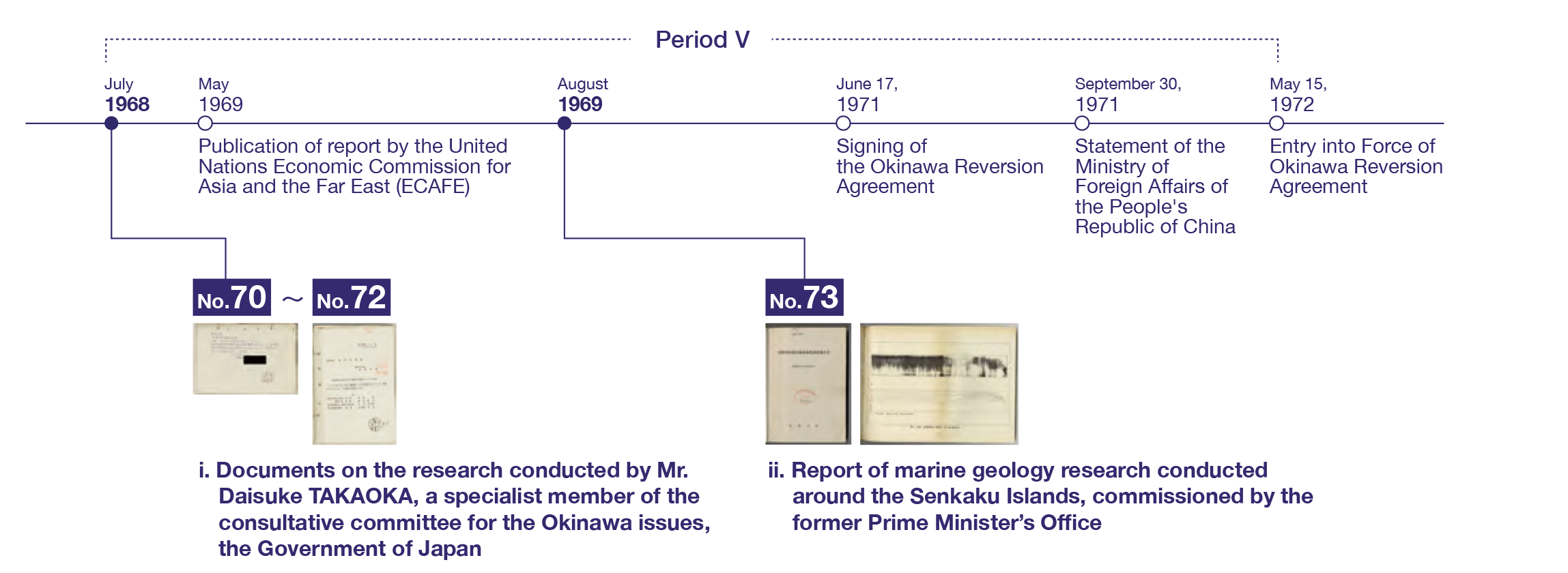
i. Documents on the research conducted by Mr. Daisuke TAKAOKA, a specialist member of the consultative committee for the Okinawa issues, the Government of Japan
The Okinawa Prefecture Archives holds the above documentsNo.70
No.71
No.72. These documents compiled by the Liaison Section of the General
Affairs Department of the Government of the Ryukyu Islands, are related to Daisuke TAKAOKA, who
visited Okinawa in July 1968 as a specialist member of the consultative committee for the Okinawa
issues.
As the United Nations Economic Commission for Asia and the Far East (ECAFE) was planning a resource exploration in the East China Sea’s seabed in the same year, TAKAOKA’s research of the Senkaku Islands was also focused on the islands’ seabed resources. Local media journalists (such as those from the newspaper Ryukyu Shimpo) joined the research group, as well as professors from the University of the Ryukyus.
With expectations for the seabed resources around Senkaku Islands, this research attracted public attention in Okinawa.
ii. Surveys of water depth and marine geology around the Senkaku Islands
At the start of the 1960s, there was growing international interest in the seabed resources of the East China Sea (*1). In 1966, the Committee for Co-ordination of Joint Prospecting for Mineral Resources in Asian Offshore Areas (CCOP) was established as an organization under the auspices of the United Nations Economic Commission for Asia and the Far East (ECAFE) (*2), to make surveys and discuss the potential of resource development.
The CCOP conducted a survey using U.S. Navy ships from October to November 1968, and its report was released in May 1969 (*3). This report stated: “A high probability exists that the continental shelf between Taiwan and Japan may be one of the most prolific oil reservoirs in the world.” This further heightened interest in the possible presence of oil reserves in the vast continental shelf of the East China Sea.
In Japan, after the visit to Okinawa Prefecture by Daisuke TAKAOKA and local survey conducted on the Senkaku Islands in July 1968, a briefing session was held in the special conference room of the Prime Minister’s Office (August 30 the same year). With the views based on the documents from the parties concerned taken into consideration thereafter, it was concluded that there was a need to urgently conduct three consecutive studies on the Senkaku Islands region.
Based on this, a water depth and marine geology research, commissioned by the Prime Minister’s Office, was carried out in the waters around the Senkaku Islands by Tokai University from June to July 1969. Researchers and persons concerned from the School of Marine Science and Technology of Tokai University, the (then) Japan Petroleum Development Corporation, the Government of the Ryukyu Islands, and the University of the Ryukyus participated in this research, and a report was submitted to the Prime Minister’s Office on August 28 the same year. The researches were conducted three times in total, with the second and third in 1970 and 1971 respectively.
Shimizu Library of Tokai University Library holds the reports of the three research studies conducted
on the waters around the Senkaku IslandsNo.73. The Ship Operation Division of Tokai University also reserves the
reports on work carried out on the Tokaidaigaku Maru Nisei, the ship used in the research, and has
disclosed the reports for this research project. The work reports show that research was carried out
around the Senkaku Islands each year, and the 1971 report includes a track chart of the waters
surrounding the Senkaku Islands.
*1 Selig S. Harrison, China, Oil, and Asia: Conflict Ahead? (1978)
*2 Japan, Republic of Korea, Republic of China (Taiwan), and the Philippines were
CCOP's member countries when the organization was first launched.
*3 Geological Structure and Some Water Characteristics of the East China Sea and
the Yellow Sea, CCOP Technical Bulletin Vol.2 (1969)
Senkaku Islands
Research and Commentary Site
- I Comprehensive issues
- II Commentary on themes by historical period
- III Analysis of claims by other countries

